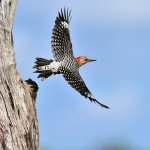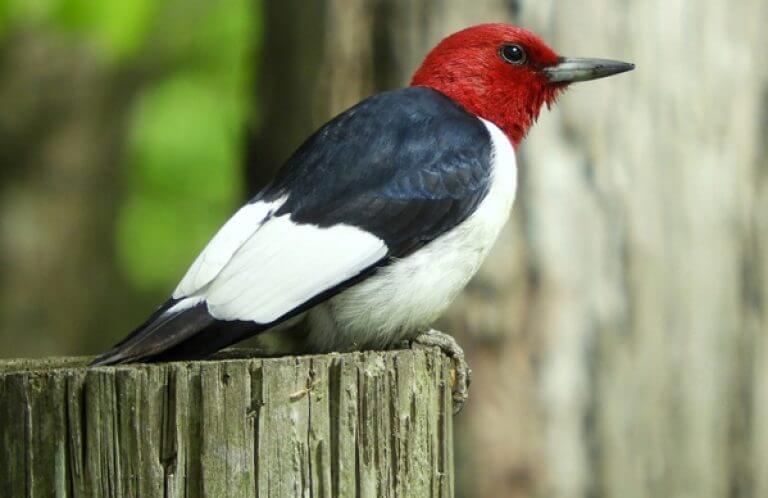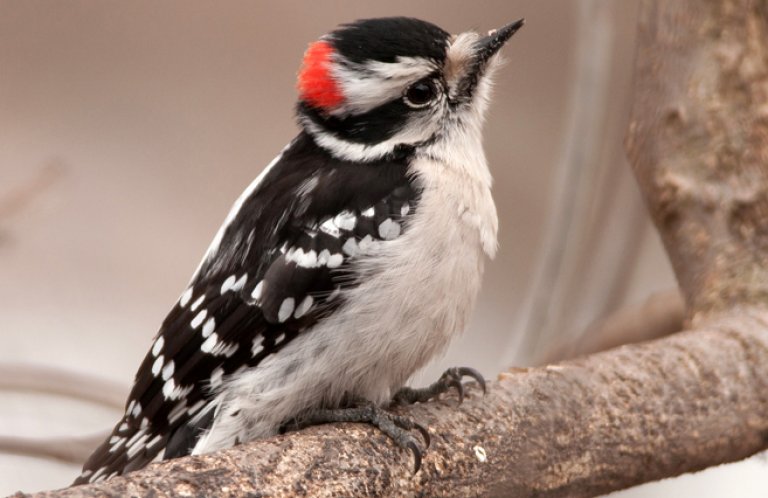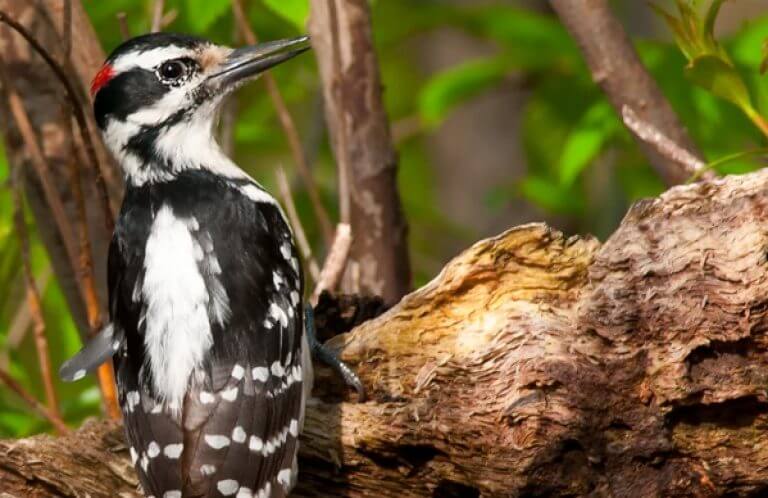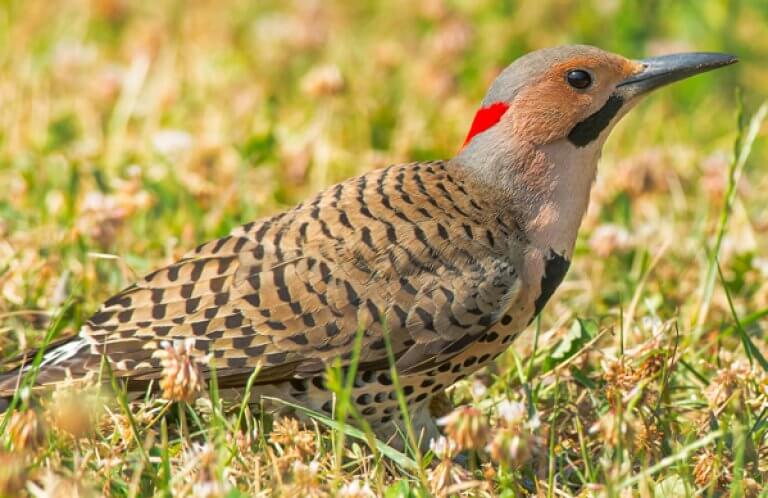About
The Red-bellied Woodpecker belongs to the boldly marked Melanerpes genus, a group of woodpeckers found only in the New World that includes Acorn and Lewis's Woodpeckers. The genus name derives from the Greek words for "black" and "creeper."
Oddly enough, the Red-bellied Woodpecker is named for its least distinctive feature, a light wash of red or pink on its belly that can only be seen if the bird is hanging upside-down. Much more noticeable is the bright red patch extending from the top of its head, in the male, and down the back of the neck, in both sexes.
Since the Red-bellied Woodpecker has so much red on its head, people often think its name should be the Red-headed Woodpecker, but that name is already taken by a related, less common species that actually has an entirely red head. Once one sees both species, the difference between the two is quite obvious. The name "Red-capped” would be a more accurate description for the Red-bellied Woodpecker.
Songs and Sounds
The Red-bellied Woodpecker frequently sounds off with a loud chrr, chrr, chrchrchrchr. It also voices a rich, purring call, qurrrr, and utters a series of kek notes similar to the call of a Northern Flicker. Red-bellied Woodpeckers are also dedicated drummers, sometimes even hammering at metal chimney flashing, drainpipes, and gutters for maximum sound projection.
(Audio: Red-bellied Woodpecker call by Bruce Lagerquist, XC430699. Accessible at www.xeno-canto.org/430699. Red-bellied Woodpecker call and drumming by Paul Marvin, XC413329. Accessible at www.xeno-canto.org/413329.)
Breeding and Feeding
Red-bellied Woodpeckers pair off in late winter and early spring. They are seasonally monogamous, meaning that pairs remain together for one nesting season. The male initiates courtship by drumming to attract the female's attention. If she joins him, they engage in a mutual tapping display before settling down to excavate a nest cavity, usually in a dead tree or limb. If a suitable tree isn't available, the Red-bellied Woodpecker will excavate a nest in a utility pole or fence post, or even re-use a cavity dug by another woodpecker.
The female lays three to eight white eggs in the nest cavity, which both parents incubate in turns, with the female on the day shift and the male taking over at night. Both parents also feed the young once they hatch. In northern parts of their range, Red-bellied Woodpeckers usually raise a single clutch per season, but in the South, they may raise two or even three clutches per year.
Like other species in the genus, the Red-bellied Woodpecker is an opportunistic feeder, dining on insects, fruits, seeds, and small vertebrates including lizards, frogs, fish, and bird nestlings. It will drink sap from Yellow-bellied Sapsucker wells, and it's a common sight at backyard feeders, along with Downy, Hairy, and Pileated Woodpeckers.
This woodpecker species is especially suited to extracting prey from crevices, thanks to a long, sticky, barbed tongue and a chisel-shaped bill. Interestingly, the male has a wider tongue tip and longer bill than the female, allowing him to reach deeper. Researchers have noted that male and female Red-bellied Woodpeckers tend to forage in slightly different micro-habitats, with males working along tree trunks and females mostly on the limbs. Like the Pinyon Jay and the Acorn Woodpecker, the Red-bellied Woodpecker caches extra food for lean times. Unlike the Acorn Woodpecker, though, it doesn't dig storage holes, only wedging seeds, nuts, and other food items deep within existing crevices where other animals cannot reach.
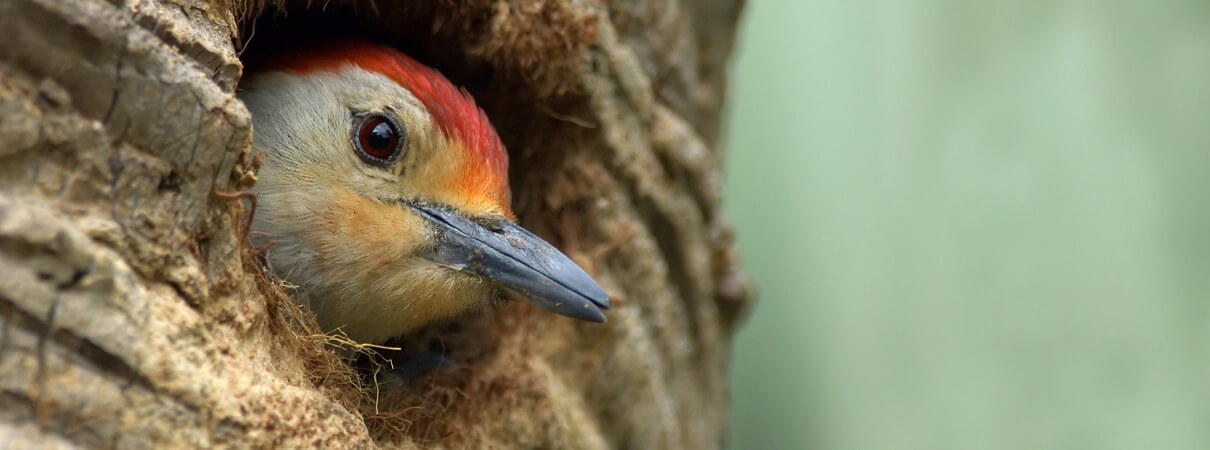
Region and Range
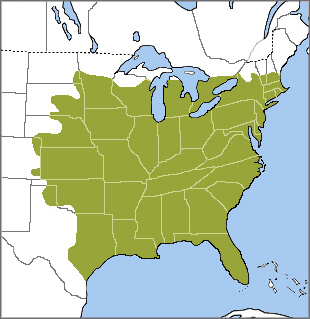
Like the Tufted Titmouse, the Red-bellied Woodpecker has slowly expanded its range northward, possibly in response to more moderate winters resulting from climate change, and from the increased availability of bird feeders during the winter. Once confined to the southeastern and central United States, Red-bellied Woodpeckers are now common as far north as southern Ontario. Although not usually migratory, northern Red-bellies sometimes move south to escape the worst winters.
Conservation
The Red-bellied Woodpecker adapts well to human changes to the landscape, as long as there are enough mature trees and snags for nesting and feeding. Although it remains common throughout the eastern U.S., this bird faces the same threats as less-adaptable species, particularly predation by cats and collisions with glass.
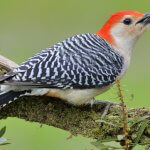
Help support ABC's conservation mission!
In addition, when property owners clear dead trees and limbs, this greatly reduces nesting locations. Maintaining “snags” on the landscape benefits not only this species but many others that use cavities, including bluebirds, flying squirrels, and a host of invertebrates specialized to break down dead and dying wood.
Get Involved
Policies enacted by the U.S. Congress and federal agencies, such as the U.S. Fish and Wildlife Service, have a huge impact on U.S. birds. You can help shape these rules for the better by telling lawmakers to prioritize birds, bird habitat, and bird-friendly measures. To get started, visit ABC's Action Center.
Living a bird-friendly life can have an immediate impact on the birds around you. Doing so can be as easy as adding native plants to your garden, avoiding pesticides, and keeping cats indoors. To learn more, visit our Bird-Friendly Life page.
American Bird Conservancy and our Migratory Bird Joint Venture partners have improved conservation management on more than 8.5 million acres of U.S. bird habitat — an area larger than the state of Maryland — over the last ten years. This is a monumental undertaking, requiring the support of many, and you can help by making a gift today.







































